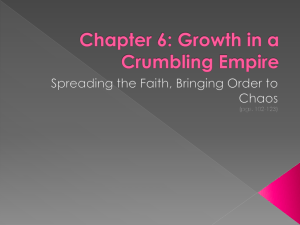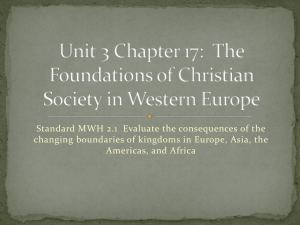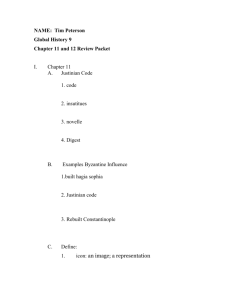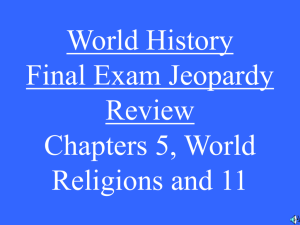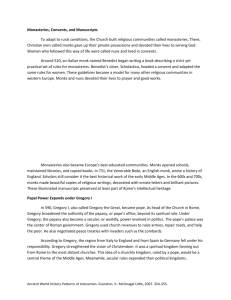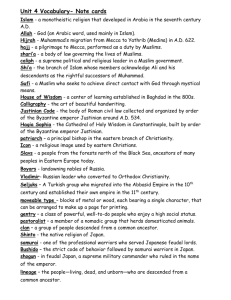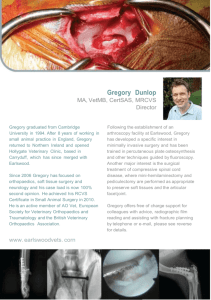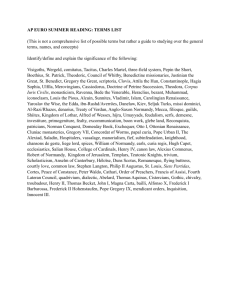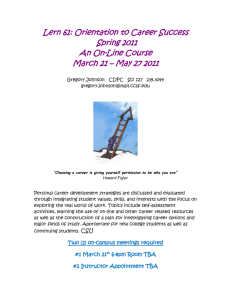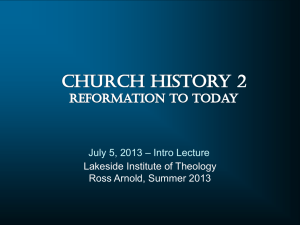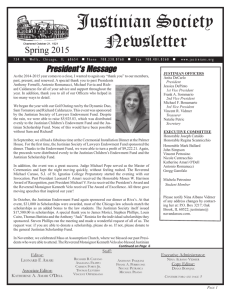Church History
advertisement
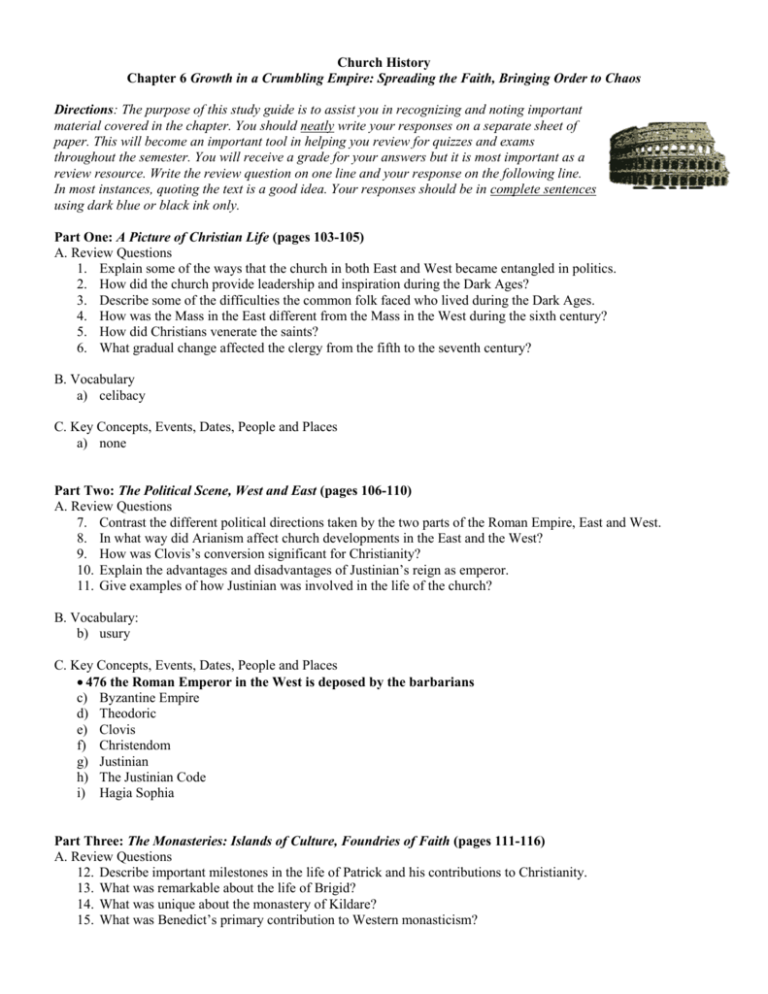
Church History Chapter 6 Growth in a Crumbling Empire: Spreading the Faith, Bringing Order to Chaos Directions: The purpose of this study guide is to assist you in recognizing and noting important material covered in the chapter. You should neatly write your responses on a separate sheet of paper. This will become an important tool in helping you review for quizzes and exams throughout the semester. You will receive a grade for your answers but it is most important as a review resource. Write the review question on one line and your response on the following line. In most instances, quoting the text is a good idea. Your responses should be in complete sentences using dark blue or black ink only. Part One: A Picture of Christian Life (pages 103-105) A. Review Questions 1. Explain some of the ways that the church in both East and West became entangled in politics. 2. How did the church provide leadership and inspiration during the Dark Ages? 3. Describe some of the difficulties the common folk faced who lived during the Dark Ages. 4. How was the Mass in the East different from the Mass in the West during the sixth century? 5. How did Christians venerate the saints? 6. What gradual change affected the clergy from the fifth to the seventh century? B. Vocabulary a) celibacy C. Key Concepts, Events, Dates, People and Places a) none Part Two: The Political Scene, West and East (pages 106-110) A. Review Questions 7. Contrast the different political directions taken by the two parts of the Roman Empire, East and West. 8. In what way did Arianism affect church developments in the East and the West? 9. How was Clovis’s conversion significant for Christianity? 10. Explain the advantages and disadvantages of Justinian’s reign as emperor. 11. Give examples of how Justinian was involved in the life of the church? B. Vocabulary: b) usury C. Key Concepts, Events, Dates, People and Places 476 the Roman Emperor in the West is deposed by the barbarians c) Byzantine Empire d) Theodoric e) Clovis f) Christendom g) Justinian h) The Justinian Code i) Hagia Sophia Part Three: The Monasteries: Islands of Culture, Foundries of Faith (pages 111-116) A. Review Questions 12. Describe important milestones in the life of Patrick and his contributions to Christianity. 13. What was remarkable about the life of Brigid? 14. What was unique about the monastery of Kildare? 15. What was Benedict’s primary contribution to Western monasticism? 16. Summarize the primary activities of the monks at Monte Casino. B. Vocabulary: j) Celts k) Illumnations l) Ora et labora C. Key Concepts, Events, Dates, People and Places m) Patrick n) Brigid o) Benedict 529 Monte Casino founded by Benedict p) Rule of Saint Benedict Part Four: Gregory the Great: A Pope Engaged with the World (pages 117-20) A. Review Questions 17. How did Gregory’s life change when he resigned his position as prefect of Rome? 18. What are four ways that Pope Gregory the Great contributed to the church and the wider world? 19. Who was Augustine of Canterbury, and what was his mission? What was different about how his mission was accomplished? 20. What were Gregory’s lasting contributions to the church? B. Vocabulary: b) none C. Key Concepts, Events, Dates, People and Places q) Gregory the Great r) Gregorian Chant s) Augustine of Canterbury t) “Servant of the Servants of God” u) Ethelbert Part Five: A New Threat: The Muslim Conquerors (pages 121-23) A. Review Questions 21. What is the central teaching of Islam and what are its beliefs? 22. Identify generally the territory that was conquered by the Muslims up to the year 732. Where were the Muslims stopped? 23. Briefly summarize the six implications of the developments of the fifth through seventh centuries. B. Vocabulary: v) infidels C. Key Concepts, Events, Dates, People and Places w) Mohammad x) Muslims vs. Islam y) Koran z) Moors aa) Charles Martel
